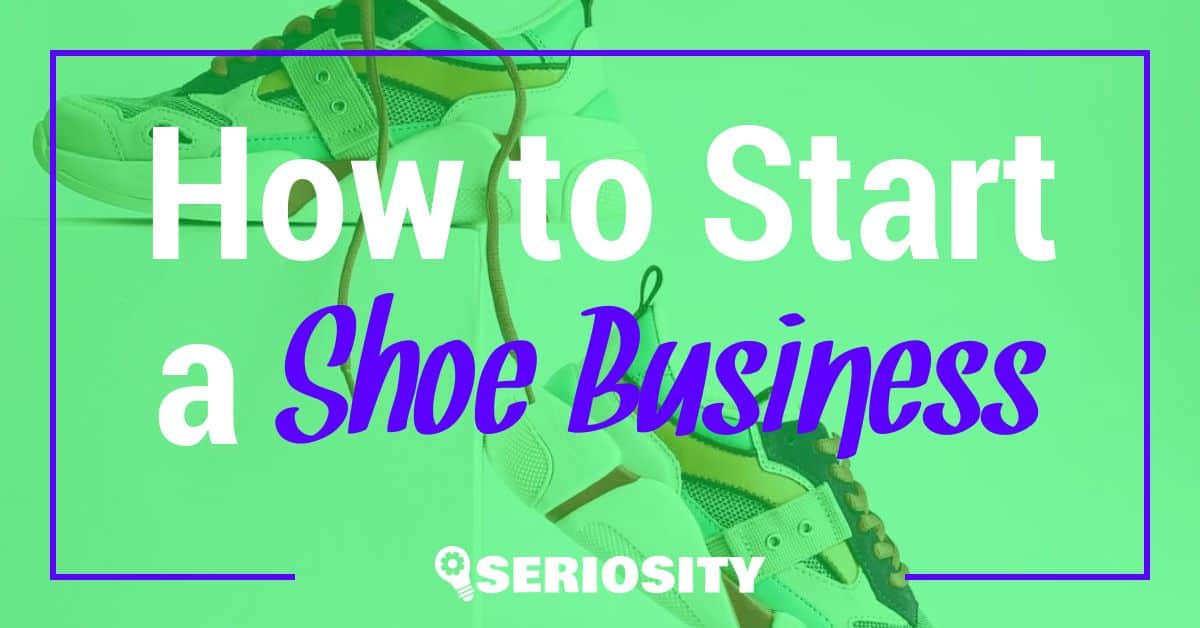Starting a shoe business is a great opportunity for clever and skillful designers. These businesses vary from specialized shoe manufacturers to shoe-selling firms. All need to serve a specific need and provide a product that fits into a profitable and unique market.
Learning how to start a shoe business includes understanding the range of this market, your financing options, and more. Just as importantly, you need to master marketing and other vital skills. The information below will ensure that you have a better chance of shoe business success.
1. Find a Niche
Shoe business niches may include multiple different markets and concepts. For example, you must choose which shoe business makes sense. These include designing high-end shoes, manufacturing low-end options, or repairing and maintaining different brands.
Which of these niches appeals to you? Pick one based on your skills and interests to improve your business success. For instance, you may enjoy designing shoes but have little manufacturing experience, meaning you can market your shoe styles to others.
Furthermore, you need to know what market you serve. For example, are you selling to teen shoe buyers, athletes, successful adults, or people with little money? Knowing what section of the market you’re working with can dictate much of your overall operation.
Once you’ve picked a niche, you can move on to general business planning. These steps can include various options, such as choosing your business model. In this way, you can identify where your business lies in the market and thrive as a shoe dealer.
2. Choose a Business Model
Business models come in many different types and fit many shoe company needs. For instance, you may focus on wholesale products, which include buying and selling shoes in bulk. When reselling them, you’ll charge less money for the boots but are more likely to make a sale.
You may also prefer dropshipping or printing on demand, which means you produce shoes for customers when they order them. This intelligent business model lets you downsize your operation and reduce unnecessary expenses. It also helps you slowly expand your shoe business as needed.
If you have more capital, you can purchase a manufacturing firm to produce shoes for your customers. This option gives you more control and management and ensures a higher quality product. However, it also requires more money and human resources.
Shoe repair and maintenance also works well for many because it requires less capital and fewer tools and focuses on specific needs. Finally, style and design are a good choice if you have connections in the field and can connect with multiple large shoe manufacturers. In this way, your shoe designs can get produced more efficiently.
Your profit margin in these business models will vary. Wholesale typically has a 60-70% margin, while dropshipping is closer to 80%. Shoe repair provides a profit margin similar to repair and maintenance, while more extensive facilities cut your profits to about 40%. Knowing how to calculate your profit margin can ensure you thrive by letting you cut back on expenses.
3. Produce a Good Business and Finance Plan
After deciding which shoe niche you want to fill, it is vital to set up your business correctly. These steps include various legal and financial processes that ensure you operate your company legally. The critical steps that you should consider when opening a shoe business include the following:
- Choosing Your Business Type: Will you be a sole proprietorship, a partnership, LLC, or a corporation? Smaller shoe businesses have higher profit margins but are riskier to run and require far more work. Corporations distribute control and risk more evenly but cut into your profits.
- Opening Bank and Credit Accounts: All businesses need a specialized bank account where you can store your finances. You may also want a commercial credit card to pay for various materials and products. Choose the options with the best terms for your needs.
- Branding and Logo Design: What kind of brand are you attempting to create? Are you producing high-fashion shoes, athletic footwear, or more budget-based options? Pick a branding option that makes sense and produce a logo that attracts customers.
- Financing Your Firm: Research different financing options, including loans, grants, venture capital, and more. Gauge how much these sources impact your expenses and calculate your overall operational costs. You need to make enough money to pay for these and make a profit.
- Planning Your Daily Operations: Create a detailed business plan that highlights how your company will run, including daily, weekly, monthly, and yearly goals. Note that you may have to adjust these plans based on your company’s success.
- Balancing Your Expenses: Try to cut back on your expenses early and focus on making as much money as possible. For instance, you may operate your business by yourself for a few years to streamline your costs. Though this may be exhausting, printing and selling shoes yourself maximizes your profits.
- Marketing Your Shoes: Produce a robust marketing plan, including online social media saturation, radio and television advertisements, and more to get your name out. Reach out to potential dealers, talk with them about pricing, and make sure that your products get on shelves.
- Investing in Materials: Now, you need to buy materials for manufacturing and shipping your shoes. These include the shoe’s material, trucks to haul the shoes, and much more. You also need to invest in any office or manufacturing equipment that your facility may need.
- Licensing and Certifying Your Shop: Talk with state and federal officials to license and certify your shop. Purchase all necessary certifications, register your business for taxes, get an employer identification number (EIN), and take all other steps required to get started.
- Opening Up Your Shop: Identify a shop location where you want to operate, such as a physical store where you can store your goods. You can also focus on online sales to save yourself money or sell at various special events, such as athletic competitions. Always get the proper licensing for these sales opportunities.
All these steps help you set up your shoe business and start making money. It is important to follow all of them properly and to make any adjustments your business may need. For instance, you may find a sole proprietorship is too demanding and need to take on a partner.
Just as importantly, you need to make sure that you maximize your profits and minimize your expenses as much as possible. This step can include buying bulk materials, building the shoes yourself, or hiring specialized help to improving shoe quality. Expanding in this way is a carefully managed situation that must be handled properly.
4. Expand Your Business Carefully
As your business thrives and you start making more money, it is crucial to expand your operations carefully. Doing so correctly can improve your profitability and enhance your overall success. Take the following steps as needed to ensure that you make more money for your firm:
- Grow from dropshipping printing to holding specialized stores of shoes as orders increase
- Create various accounts on art-based pages, such as Printify, to market your work
- Integrate an online sales channel with various commerce firms, such as Etsy, eBay, and PrestaShop
- Produce a website where you can market and sell your shoes to others
- Allow higher customization on your shoes to improve customer interest
- Market your firm online through various social media channels
- Increase your production and open a brick-and-mortar shop
- Consider buying expanded manufacturing options as your sales increase
Controlled expansion helps you reach out to more potential customers, develop your shoe line, and boost your profits. It also minimizes the risk of overextension, a real problem with startups that get successful very quickly. Pay attention to your bottom line and carefully increase your operation to ensure that you hit your sales goals, minimize your expenses, and reach a broader market.





